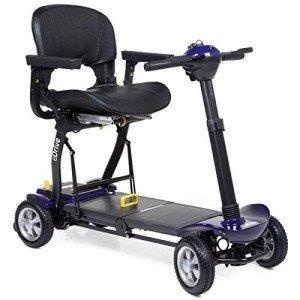
automaticfoldingscooters0472
About automaticfoldingscooters0472
Understanding Portable Mobility Scooters: A Comprehensive Guide

As the global population ages, the demand for assistive mobility devices has surged, bringing portable mobility scooters into the spotlight. These nimble devices offer a solution for those with limited mobility, allowing them to regain independence and navigate their surroundings with ease. This article delves into the different types of portable mobility scooters, their benefits, features to consider when purchasing one, and answers frequently asked questions (FAQs) about these handy devices.

What Are Portable Mobility Scooters?
Portable mobility scooters are compact, motorized vehicles designed to aid individuals with mobility challenges in getting around more easily. They typically consist of a seat, a platform for the user’s feet, and handlebars for steering. The key characteristic that distinguishes portable mobility scooters from full-sized models is their lightweight and collapsible design, making them easy to transport and store.
Types of Portable Mobility Scooters
Portable mobility scooters can generally be categorized into three types, each catering to the specific needs of users. The following table outlines these categories along with their features.
| Type | Description | Best For |
|---|---|---|
| Travel Scooters | Lightweight and easy to fold, these scooters often have a maximum weight capacity of around 250-300 lbs. | Frequent travelers, air travel |
| Collapsible Scooters | These scooters can be disassembled into several parts, allowing for easier storage in cars or tight spaces. | Users with limited storage space |
| Heavy-Duty Scooters | Designed to accommodate higher weight capacities (up to 500 lbs), these scooters are sturdier and more robust. | Heavier users, outdoor terrain |
Benefits of Using Portable Mobility Scooters
Portable mobility scooters offer numerous advantages that contribute to the quality of life for users. Here are some key benefits:
- Enhanced Independence: Users can navigate public spaces and their neighborhoods without relying on help from others.
- Convenience: Lightweight and foldable designs make scooters easy to transport in vehicles, on public transport, or for recreational outings.
- Comfort and Safety: Many models feature comfortable seating, adjustable armrests, and safety elements such as stability controls and anti-tip designs.
- Cost-Effectiveness: Portable mobility scooters can be a more affordable option compared to wheelchairs or other mobility aids that require significant modifications.
- Versatility: These scooters can be used for various purposes, including shopping, attending social events, and outdoor adventures.
Features to Consider When Purchasing a Portable Mobility Scooter
While evaluating portable mobility scooters, potential buyers should consider several essential features that align with their lifestyle and needs. The list below provides crucial factors to contemplate:
- Weight Capacity: Ensure the scooter can comfortably support the user’s weight.
- Range: Look at the distance the scooter can cover on a single charge, especially for daily use.
- Battery Life: Longer battery life means less frequent charging and more time on the road.
- Portability: Check if the scooter can be easily disassembled or folded for transport.
- Comfort Features: Opt for models with comfortable seating, adjustable backrests, and user-friendly controls.
- Speed: Consider a model that suits the user’s preferred speed and terrain.
- Warranty and Support: Reliable warranties and customer support can provide peace of mind.
Maintenance of Portable Mobility Scooters
Maintaining a portable mobility scooter ensures its longevity and reliable performance. Here are some tips for upkeep:
- Clean the scooter regularly with mild soap and water.
- Check tire pressure and air for pneumatic tires.
- Inspect batteries for corrosion and ensure terminals are clean.
- Periodically check safety features like lights and horn functionality.
- Schedule professional servicing if issues arise or if the scooter gets heavy use.
FAQs About Portable Mobility Scooters
Here are some frequently asked questions that many first-time buyers have when considering a portable mobility scooter:
1. How fast can a portable mobility scooter go?
Most portable mobility scooters have a top speed between 4 to 8 mph, depending on the model. Users should check specifications to find one that meets their needs.
2. Will insurance cover the cost of a mobility scooter?
Many insurance plans, including Medicare and Medicaid, cover a portion of the costs of mobility scooters if deemed medically necessary. It is advisable to check with your insurance provider for details.
3. Can I use my mobility scooter on public transport?
Many public transport systems make accommodations for mobility scooters. However, users should verify specific policies regarding size, weight limits, and operational rules.
4. What is the weight limit for portable mobility scooters?
Weight limits can vary significantly between different models. On average, the capacity ranges from 250 lbs to 500 lbs, depending on whether the scooter is marketed as travel, collapsible, or heavy-duty.
5. How do I charge my mobility scooter?
Most scooters come with battery chargers that plug into a standard electrical outlet. Users should refer to the manual for specific instructions on charging and battery care.
Portable mobility scooters are powerful tools that significantly enhance the independence and quality of life for individuals with mobility challenges. By understanding the different types, benefits, essential features, and maintenance tips, potential buyers can make informed choices that best suit their needs. With the proper mobility scooter, users can explore the world around them with confidence and ease, enjoying the simple pleasures of life once again.
No listing found.
